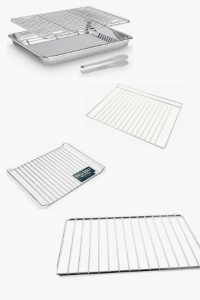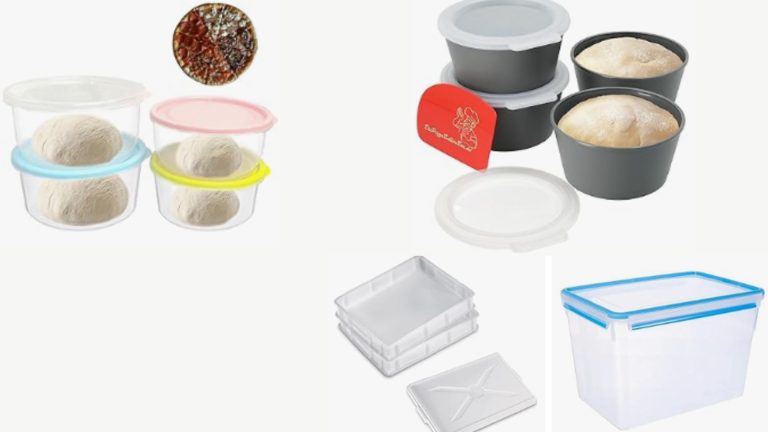CR: Cooling Rack role in cake making Explained
In this topic, I’m going to talk about the essential role of a cooling rack in cake making, drawing from my own personal experience.
Table of Contents
ToggleWhat is a Cooling Rack?
Let’s start by explaining what a cooling rack is and what it’s all about. A cooling rack is a simple yet indispensable tool in the realm of baking. It’s essentially a grid-like platform typically made of metal or wire. You’ve probably seen one it looks like a miniature bed of metal bars. Check out the right Cooling Rack, cake tools, and ingredients that you need here

Why is it Crucial in Cake Making?
When you bake a cake, especially a delicate creation like a sponge or chiffon cake, the cooling process is as critical as the baking itself. Here’s where the cooling rack comes into play. Once your cake is baked to golden perfection, you don’t just take it out of the oven and let it sit on a countertop. That’s where many home bakers make their first crucial mistake they forget the cooling rack.
The Role of a Cooling Rack
So, what does a cooling rack actually do? Imagine this: your cake has just finished baking. It’s hot, fragile, and needs gentle handling. Placing it directly on a solid surface traps steam underneath, which can turn your masterpiece into a soggy mess. Instead, gently transfer your cake from the baking tin onto the cooling rack. The elevated design allows air to circulate evenly around the cake, promoting quicker and more even cooling. This helps prevent the formation of condensation on the bottom, preserving the texture and ensuring your cake stays light and fluffy. Check out the right Cooling Rack, cake tools, and ingredients that you need here
How to Use a Cooling Rack Properly
Using a cooling rack is simple but crucial for the best results. Here’s a quick guide:
- Prepare Your Cooling Rack: Ensure your cooling rack is clean and placed on a stable surface.
- Transfer the Cake: Once your cake is baked, remove it from the oven and let it sit in the baking tin for a few minutes to settle. Then, gently invert the tin over the cooling rack and carefully lift the tin away. The cake should now be resting on the rack.
- Allow to Cool: Leave the cake on the cooling rack until it reaches room temperature. This can take anywhere from 30 minutes to an hour, depending on the size and type of cake.
- Frosting and Serving: Once cooled, your cake is ready to be frosted and served. The cooling rack has ensured it retains its texture and moisture, making it easier to work with and more enjoyable to eat.
the humble cooling rack plays a vital role in the delicate art of cake making. By allowing air to circulate around your baked creations, it ensures they cool evenly and maintain their integrity.

Comparing Cooling Rack Materials
Now, let’s drill deeper by comparing different materials used in cooling racks.
Metal Cooling Racks
Metal cooling racks, typically made of stainless steel or chrome-plated steel, are sturdy and durable options. They provide excellent airflow due to their open-grid design, which helps cakes cool quickly and evenly. The metal construction also makes them easy to clean and maintain, often dishwasher safe. However, they can sometimes leave faint grid marks on the bottom of delicate cakes.
Wire Cooling Racks
Wire cooling racks are another popular choice, often made from thin metal wires woven together. They are lightweight and flexible, making them easy to store. Wire racks also provide good airflow, though not as efficient as solid metal racks. They are generally more affordable and come in various sizes and shapes to accommodate different baking needs. However, they may not be as durable as solid metal racks and can bend or warp over time. Check out the right Cooling Rack, cake tools, and ingredients that you need here
Non-Stick Cooling Racks
Non-stick cooling racks are coated with a non-stick surface, usually Teflon or similar material. These racks are convenient because they prevent cakes from sticking and are easy to clean by hand. However, the non-stick coating can wear off over time, especially if exposed to high temperatures or abrasive cleaning methods. They are suitable for most baking tasks but may not provide the same level of airflow as traditional metal or wire racks.
Wooden Cooling Racks
Wooden cooling racks are less common but offer a rustic appeal. They are often made from bamboo or other hardwoods. Wooden racks are gentle on delicate cakes and pastries, preventing grid marks on the bottoms. However, they require more care in cleaning and should not be submerged in water or placed in the dishwasher. Wooden racks are best suited for light cooling tasks and may not be as versatile as metal or wire options. Check out the right Cooling Rack, cake tools, and ingredients that you need here
Comparison tabular
Here’s a comparison table summarizing the key notes and considerations for different types of cooling racks:
| Cooling Rack Type | Material | Advantages | Considerations |
|---|---|---|---|
| Metal Cooling Racks | Stainless Steel or Chrome-Plated Steel | – Sturdy and durable
– Excellent airflow for even cooling – Easy to clean, often dishwasher safe |
– May leave faint grid marks on delicate cakes
– Can be more expensive than other options |
| Wire Cooling Racks | Thin Metal Wires | – Lightweight and flexible
– Good airflow – Affordable and available in various sizes |
– Less durable, prone to bending or warping
– Not as efficient airflow as solid metal racks |
| Non-Stick Cooling Racks | Teflon or Similar Coating | – Prevents sticking for easy cake removal
– Easy to clean by hand |
– Non-stick coating may wear off over time
– May not provide as efficient airflow as metal racks |
| Wooden Cooling Racks | Bamboo or Hardwoods | – Gentle on delicate cakes, prevents grid marks
– Rustic and aesthetic appeal |
– Requires careful cleaning, should not be submerged
– Not as versatile as metal or wire racks |
Key Notes and Considerations
- Material: Each type of cooling rack is made from different materials metal, wire, non-stick coating, or wood offering various benefits and considerations.
- Advantages: Consider factors such as durability, airflow for even cooling, ease of cleaning, and aesthetic appeal when choosing a cooling rack.
- Considerations: Factors to keep in mind include potential grid marks on delicate cakes, durability over time, cleaning requirements, and specific baking needs.
FAQs on Cooling Racks
Q: Why do I need a cooling rack when I can just let my cake cool on the countertop?
A: Using a cooling rack ensures that air can circulate around the entire cake, allowing it to cool evenly. This helps prevent the formation of steam underneath the cake, which can make it soggy.
Q: Can I use a substitute for a cooling rack, like a wire mesh or even a baking sheet?
A: While a wire mesh or a baking sheet with raised edges can work in a pinch, they may not provide the same level of airflow as a dedicated cooling rack. This could affect how evenly your cake cools and may impact its texture.
Q: How do I clean and maintain a metal cooling rack?
A: Metal cooling racks are often dishwasher safe. If washing by hand, use a soft sponge and mild detergent to avoid scratching the surface. Dry thoroughly to prevent rusting.
Q: Are there specific cooling racks for different types of baking, like cookies versus cakes?
A: Cooling racks are generally versatile and can be used for various baked goods. For smaller items like cookies, choose a rack with a tighter grid to prevent them from slipping through.
Q: Can I stack cakes on top of each other on a cooling rack?
A: It’s best to cool cakes individually to ensure they cool properly and avoid condensation buildup. If stacking is necessary, place a layer of parchment paper or a clean kitchen towel between each cake. Check out the right Cooling Rack, cake tools, and ingredients that you need here
Final Words
Choosing the right cooling rack and using it correctly can significantly enhance your baking results. Whether you opt for a sturdy metal rack, a flexible wire design, or a non-stick coated option, each type has its advantages. Consider your baking needs, the delicacy of your creations, and ease of maintenance when selecting a cooling rack.

Hi!
I’m Mike, the creator of Forum Foodies. In my own personal experience, understanding ingredients is key to great cooking.
Forum Foodies offers guides on various ingredients, from staples to exotic finds. Join our community, share your experiences, and learn from fellow food lovers.
Have questions or suggestions? Email me at info@forumfoodies.com. Let’s embark on this delicious adventure together.
Happy cooking.
Mike/
Related Posts
- CR: Cookie Rack role in cake making Explained
In this topic, I'm going to talk about the role of a CR - Cookie…
- CL: Cooling Ladder role in cake making Explained
In this topic, I'm going to talk about the Cooling Ladder in cake making, based…
- CW: Cooling Wire role in cake making Explained
In my own personal experience, understanding the role of CW - Cooling Wire in cake…
- CB: Cooling Bin role in cake making Carified
In this topic, I'm going to talk about the CB - Cooling Bin in my…
- CA: Cooling Arm role in cake making Explained
In this topic I'm going to talk about CA - Cooling Arm in my own…
- BR: Baking Rack role in cake making Clarified
In this topic, I'm going to talk about the essential tool in cake making: the…
- CR: Cupcake Rack role in cake making Explained
When it comes to baking, every tool in the kitchen has a role to play,…
- CF: Cooling Fan role in cake making Clarified
In this topic, I'm going to talk about the essential role of cooling fans in…
- FR: Flour Rack role in cake making Explained
In this topic, I'm going to talk about the Flour Rack in cake making, drawing…
- CT: Cake Tester role in cake making Clarified
In this topic, I'm going to talk about a tool that plays a crucial role…
- CS: Cake Stenci role in cake making Explained
In this topic, I'm going to talk about cake stencils and their role in cake…
- CB: Cake Board role in cake making Explained
In This Topic I'm Going to Talk About Cake Boards in My Own Personal Experience…
- SR: Sifter Rack role in cake making Explained
In this topic, I’m going to talk about the Sifter Rack and its role in…
- CS: Cake Slicer role in cake making Clarified
In this topic, I'm going to talk about the CS - Cake Slicer, drawing from…
- CP: Cake Pan role in cake making Clarified
In this topic, I'm going to talk about cake pans and their crucial role in…




